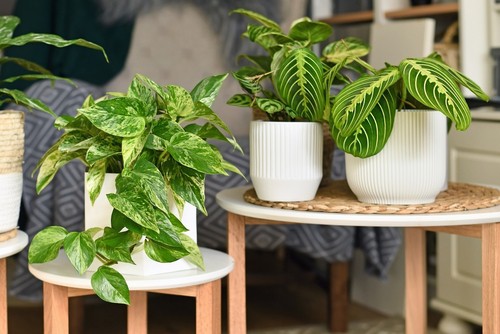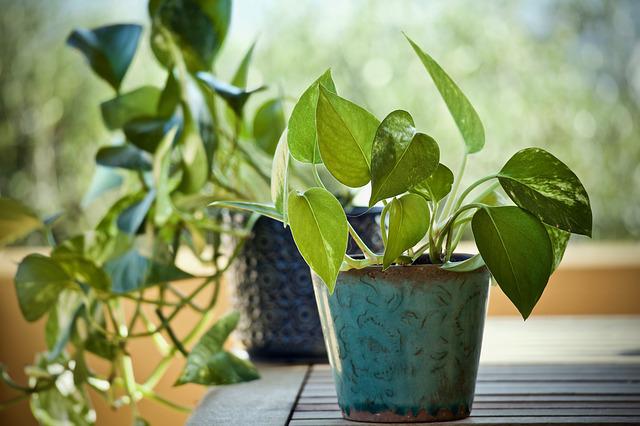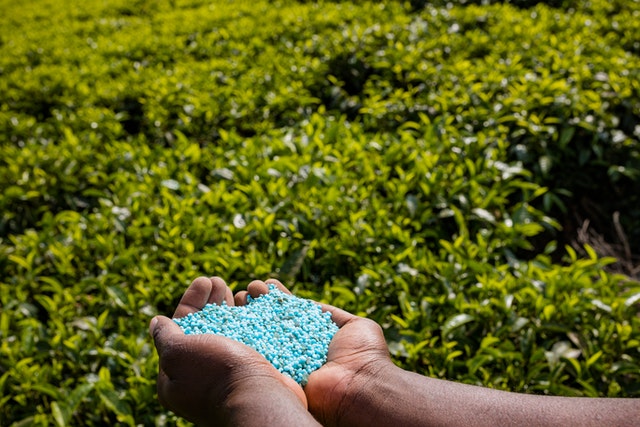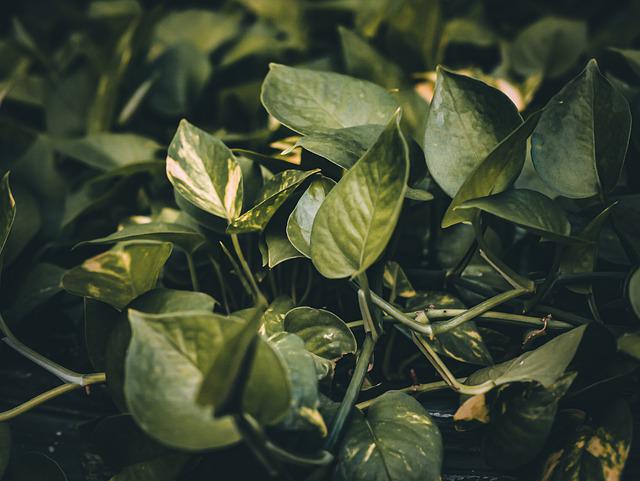Pothos are popular favorites of plant parents. A pothos plant is a type of evergreen vine that is native to the Solomon Islands. The plant has long, heart-shaped leaves that are variegated with green, white, and yellow.
Pothos plants are relatively easy to care for and can thrive in various climates. They are also portable, and look perfect in the oddest house corners. So, it becomes alarming when they start to look ill. And the most common question that pothos parents raise is, “why does my pothos have brown spots?”
They are often used as houseplants or office plants because they can tolerate low light levels and infrequent watering. Pothos plants are also known for removing toxins from the air, making them an excellent choice for people who suffer from allergies or asthma.
Although pothos plants are not typically considered to be poisonous, they can cause stomach upset if consumed in large quantities.
There are a thousand and one reasons it happens, and this article will guide you to possible causes of brown spots of pothos. On the bright side, although these brown spots make the pothos look unhealthy, pothos can recover and thrive again.
Some of the main causes of brown spots on pothos include overwatering, inadequate lighting, pests, and nutrient deficiencies. It’s important to diagnose the specific cause before implementing any solutions to ensure the best outcome for your plant.
Prevention and Maintenance Tips for Healthy Pothos Plants

Pothos plants are beloved by many plant parents for their beauty and low-maintenance nature. However, to ensure your pothos remains healthy and free from brown spots, it’s essential to follow proper prevention and maintenance practices.
By implementing these tips, you can enjoy thriving pothos plants in your home or office.
1. Proper Watering Techniques
To prevent brown spots caused by overwatering, it’s crucial to understand the watering needs of your pothos. Only water your plant when the top inch of soil feels dry to the touch. Avoid allowing your pothos to sit in standing water, as this can lead to root rot and brown spots. Use well-draining soil and ensure the pot has drainage holes to facilitate proper water flow.
2. Providing Optimal Lighting
While pothos can tolerate low light conditions, it’s still important to provide them with adequate indirect sunlight. Place your pothos in a well-lit area that receives bright, indirect light for about six hours a day. Avoid exposing the plant to direct sunlight for extended periods, as it can result in sunburn and brown spots.
3. Regular Inspection and Pest Control
Regularly inspect your pothos for signs of pests such as spider mites, mealybugs, or aphids. These pests can cause damage to the plant, leading to brown spots. If you notice any signs of infestation, take immediate action to control and eliminate the pests. Use organic pest control methods or consult a professional if needed.
4. Balanced Nutrient Supply
Provide your pothos with balanced nutrition to prevent nutrient deficiencies that can cause brown spots. Use a well-balanced fertilizer specifically formulated for houseplants and follow the recommended dosage instructions.
Avoid over-fertilization, as it can lead to fertilizer toxicity and damage the plant. Regularly monitor the condition of the leaves and adjust the fertilization accordingly.
5. Maintaining Proper Humidity
Pothos plants thrive in moderate to high humidity levels. If the air in your home or office is dry, consider using a humidifier or placing a tray of water near the plant to increase humidity. Avoid exposing your pothos to dry drafts or air-conditioned areas, as it can result in dehydration and brown spots.
Why Does My Pothos Have Brown Spots? Causes and Outs

When the conditions aren’t right, even the strongest children get sick. For example, pothos are most famous for their ability to thrive in most grooming conditions. Yet, when essential factors are imbalanced, they become sick.
A common telltale sign that your pothos is unhealthy and in need of a prompt response is brown spots. So, instead of asking, “Why does my pothos have brown spots?” we would answer the question, “What causes brown spots on my pothos?”
There are several causes of brown spots on pothos, but the most common causes are:
1. Excessive Watering
Pothos are independent plant babies that have adapted their body parts to use only small amounts of water. This is because their native habitats are arid regions. So, overwatering these succulents does them more harm than good.
The pothos’ roots drown in the water and begin to rot. This prevents the uptake of nutrients from the soil and causes the entire pothos to fall ill. It tells you it is sick by developing brown spots on its leaves and stem.
What to Do
When you notice brown spots on pothos, check the roots for any signs of rotting. If there are, trim off all dead parts. This will prevent the spread of decay to healthy roots. Also, spray suitable fungicides on healthy roots to kill fungal spores.
If pothos is potted, drill holes in the pots to drain excessive water. It is also wise to use humidifiers to mist the leaves until they can tolerate large amounts of water. To enhance drainage, you can also set up stone beds beneath the plant pots.
2. Prolonged Exposure to Direct Sunlight

Pothos, like most other plants, also need sunlight for photosynthesis. But, these plant babies prefer indirect sunlight to the harsh sun. So, when you leave pothos under the sun for long periods, they are prone to scorching and sunburns.
These sunburns present as brown spots on the most exposed parts of your pothos. This is because the sun damages plant tissues and disallows them from using nutrients. So, it would help if you protected your pothos from direct sunlight at all costs.
What to Do
As a rule, you should never leave your pothos out on hot days. Pothos require exposure to indirect sunlight for 6 hours daily. So, always leave them at house parts that receive bright light during the day.
Suppose the sunburns are severe, trim the parts with brown patches. This allows the healthy plant parts to use the available nutrients for body repair.
3. Leaf Spot Disease
Pothos are not susceptible to pathogens and spend entire lifetimes not falling ill. Yet, the bacterial leaf spot disease can become its predator with suitable conditions. This disease can destroy your pothos if you do not act promptly.
The disease usually presents as brown spots on several regions of the pothos. These spots may have yellow halos within them.
What to Do
Isolate the sick pothos from the pack to keep the disease from spreading. Next, prune all affected plant leaves to contain the spread. Do not supply excessive water to the plant and keep it in a dry area.
Gently break the soil around the roots and remove the pathos from the contaminated soil. Repot the plant in suitable soil and watch for signs of recovery,
You must monitor the convalescent pothos for any signs of reinfection and handle them promptly.
4. Fertilizer Toxicity

Applying fertilizers improves pothos growth, but excessive amounts can be detrimental. Fertilizers contain elements such as nitrogen that make the soil acidic. Acidic soils choke pothos roots and prevent nutrient uptake.
This causes the plant leaves to turn yellow with brown spots. The leaves will typically coil up, and the pothos will experience stunted growth.
What to Do
The most suitable solution for fertilizer toxicity is to change the plant soil or repot the plant in viable soil. You can also use compost as a source of fertilizer as it is less toxic than inorganic fertilizers.
Fun Fact
An interesting fact about the pothos plant is that the common name for this beauty is devil’s ivy. Its name can put a smile on your face on dull days. Ironically, the pothos is an innocent-looking plant.
Learn more about pothos: Pothos Sunburn
Summary
There are vast answers to the question, “why does my pothos have brown spots.” It is then essential that you provide optimal growth conditions for your pothos. You must also observe the plant routinely. This helps you to notice any abnormalities in plant growth and appearance.
The common causes of brown spots on pothos plants involve poor management practices and extreme weather conditions. Overcoming these hurdles will keep your pothos thriving.
The most crucial step in keeping your pothos healthy is acting promptly. This helps curb infections and diseases at early stages and keeps your plant safe.
Frequently Asked Questions
What are the brown spots on my pothos leaves?
Brown spots on pothos alert that your pothos is in danger. This sign often accompanies other symptoms that guide you towards the problem. Your knowledge of common diseases will help treat and nurse sick pothos to health.
Why is my pothos plant dying?
Your pothos may die because the plant soil is not conducive to growth. If you have applied excessive fertilizers, then you may worry about toxicity. The soil becomes acidic with high salts such as nitrogen and chlorine levels. This acidic environment chokes the pothos roots and prevents nutrient uptake.
To get the best results, wash the salts from the plant surface and repot them in viable soil.
Why are my houseplant leaves turning brown?
When plants are wilting, they turn brown or gray. This is also true for houseplants and succulents. A wide range of reasons accounts for wilting houseplants.
Yet, the most common culprits are poor management practices and extreme weather conditions. If you consider these, your houseplants will likely thrive and blossom under your care.
What happens to pothos when humidity is low?
When humidity is low, the plants will most likely suffer from dehydration. The pathos that does not have a sufficient water supply will be unable to use the nutrients available for growth and metabolism. This will lead to malnutrition, weak immunity, and stunting.
So, these plants will become yellow or brown and wilt and droop. They will also look sickly, and their foliage will curl up and die off.
To correct this, apply water to the leaves using a humidifier or water the roots and allow the excess to drain. This prevents flooding and root rot.
Conclusion
A pothos parent would ask, “Why does my pothos have brown spots?” Although there are numerous answers to this question, this article explains the common causes of these spots on pothos. With the guidelines provided, you can manage your pothos successfully.
You could also look up other facts and tips on houseplants and gardening protocols to learn more about gardening.

Hey, I’m Lisa and I’ve been an avid gardener for over 30 years. I love writing, talking and living in the garden! Feel free to connect with me on my socials below

